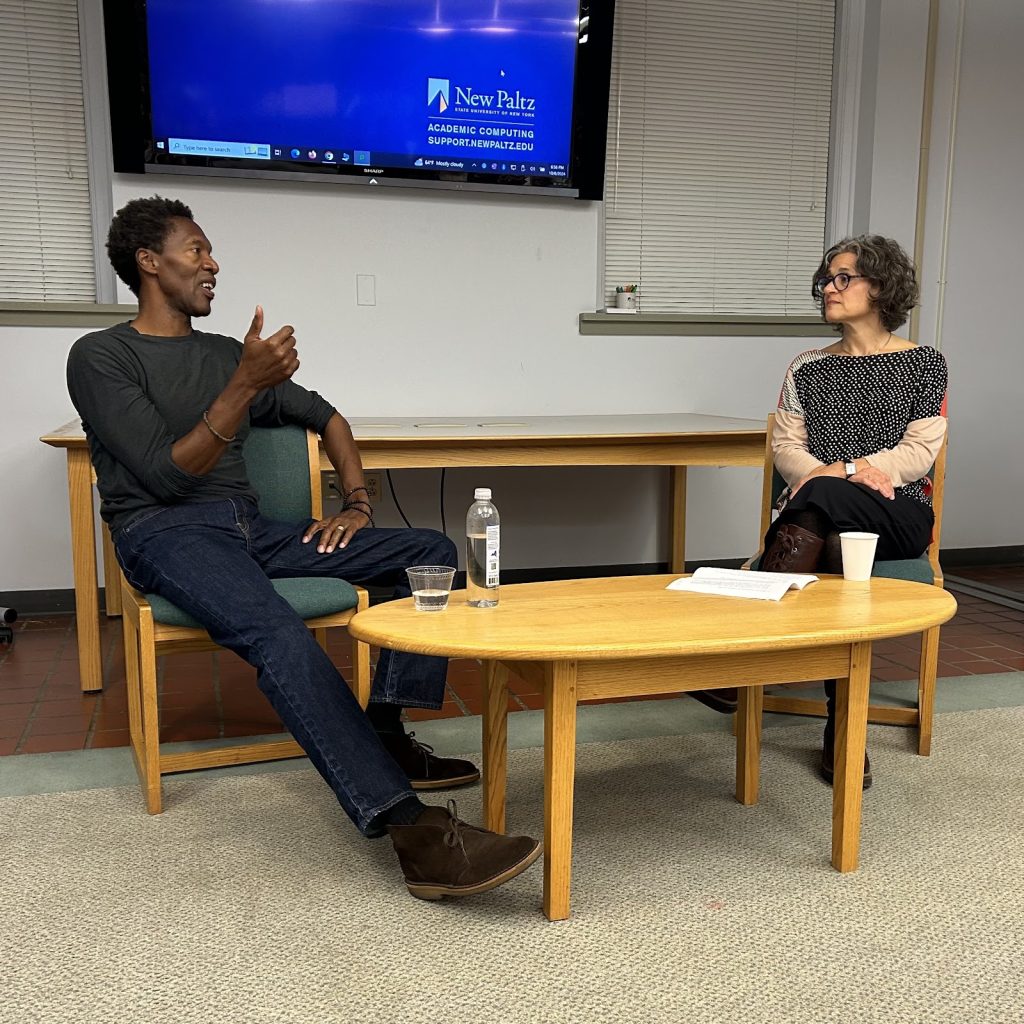Myra Mimlitsch-Gray explores her artistic lineage in light of her new piece in “In and Out of Lineage: Tracing Artistic Heritage Through SUNY New Paltz Faculty,” a group exhibition at the Dorsky Museum.

Photo by Devon Jane Schweizer
NEW PALTZ, N.Y. — Myra Mimlitsch-Gray has a knack for the uncomfortable. Despite being a master of metalsmithing, she loves being a beginner and experimenting with unfamiliar ideas and artistic mediums in her projects. Her molten candelabras, t-shirt scraps made of metal and decanters carved into blocks of copper are captivating reminders of the metalsmithing craft itself, as well as the objects we use in our daily lives. She teaches these experimental values to her students at SUNY New Paltz.
One of her latest pieces, “Felt. Grommet. Study” is featured in “In and Out of Lineage: Tracing Artistic Heritage Through SUNY New Paltz Faculty,” a group exhibition at the Dorsky Museum.
The Little Rebellion: What got you interested in working with metal?
Myra Mimlitsch-Gray: I first learned how to use some metal tools in a pre-college program between my junior and senior year of high school at Carnegie Mellon University. That’s the first time I was exposed to it in a two-week session in jewelry making. I was always doing stuff in the crafts. While I make jewelry occasionally, I’m more known in the sculptural realm. Jewelry is kind of a gateway to the discipline.
TLR: What inspired you to start teaching metalsmithing?
Mimlitsch-Gray: People that are really into making things with their hands tend to be like, “Let me show you.” It naturally comes from excitement about helping somebody else become a part of the thing you’re really interested in.
Photo by Devon Jane Schweizer
TLR: How has creating your own work intertwined with your teaching?
Mimlitsch-Gray: I understand and kind of accept the terms that my work exists as a model of an idea or a thought process, it’s almost pedagogical in that sense. Teaching does tend to cut into the studio time quite a bit, so that rarefied moment when I can focus on what it is I’m trying to say or try new things is in the summer. When school starts you’re just trying to get in the studio to finish the idea you started. It’s very tricky and in that sense, the work slows. You’re really stuck studying your own impulses. It takes a lot of convincing to move it forward in those circumstances.
TLR: Tell me about your piece in “In and Out of Lineage.”
Mimlitsch-Gray: An underpinning of my work is this question of utility. When people see my work, especially with things in metal, there’s this assumption that it has to be for something. In that particular piece, I started to think about the grommet as this humble and often overlooked utilitarian object. Without it, your tarp would not hang on the wall or your shoelaces would rip through the leather.
I started thinking about the symbiotic relationship between the felt and the grommet. The grommet needs the fabric in order to have a purpose for being, and the fabric needs the grommet to be reinforced. It’s no longer just a flat plane, but it’s rearing up under tension with the grommet, the weight, the gravity. I used a hand-me down chunk of felt and felt itself is made out of this amalgamation of all these different things. It’s a lineage in and of itself as a material.
What’s really funny about that particular piece is that I took a blacksmithing course in Maine at the Haystack Mountain School of Crafts, where I teach sometimes. I put myself in the role of being a student there. I was supposed to be making cutlery like spoons, things like that, but I was interested in trying to deviate from that and explore this other thing. It was sort of fun to be there like, “OK, here’s my piece!”
TLR: What draws you towards the unexplored and the uncomfortable?
Mimlitsch-Gray: Occasionally, I’ll take a workshop as a student. I’m a terrible student because I already know a lot of stuff, but really it’s fun because it also is very uncomfortable in a different way. I’m here to open myself up to new possibilities, and to be part of the community of the classroom.
When you know so well what you’re doing, it becomes boring. Like looking in the mirror all the time, it feeds a certain sort of satisfaction, but it doesn’t do much in terms of ensuring a dialogic aspect for your work. That to me is what’s really important for art. You can make, make, make all you want, but engaging people in that form of dialogue is absolutely critical for completing the circuit.
TLR: Are there any specific goals you have with your art?
Mimlitsch-Gray: [My art] is intended to provoke the question in the most simple terms. You know, what is it? What is it for? With my art, I want people to enjoy it. I don’t want to scare anybody away with it. I kind of enjoy when they can encounter it by happenstance.
You can find more information about Mimlitsch-Gray and her artwork at https://www.mimlitschgray.com/ and her contact is [email protected]
